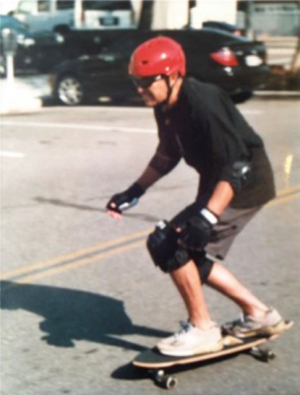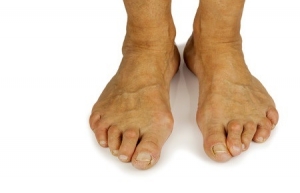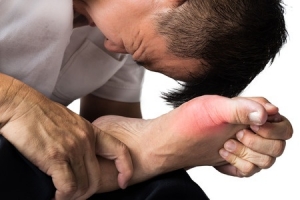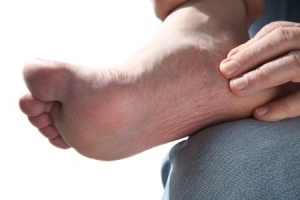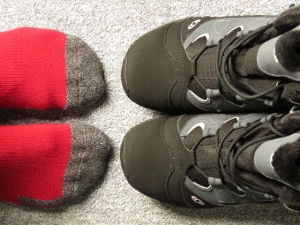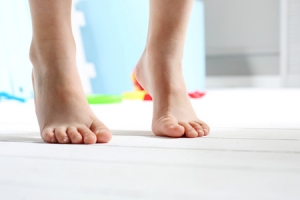Connect With Us
Blogs
5 Steps to Better Podiatric Care
At Superior Foot & Ankle Care our foot and ankle surgeons, Dr. Victoria Foley and Dr. Constance Omelas, want to be your partners in podiatric care. Being partners means working together to provide you with the best foot health care possible. Your visit to us can be much more fruitful and your treatment faster and more effective if you help us from your end. Here are 5 ways that you can assist us in making sure you get a prompt diagnosis and effective treatment plan:
- Pinpoint the problem. If you are experiencing pain or discomfort in your feet or ankles do a little self-sleuthing to gather as much information as possible. Ask yourself these questions: how would I describe the pain (sharp, aching, dull)? How long have I had this pain? Where exactly on my foot does it hurt? Did the condition come on suddenly or gradually? What increases the discomfort (exercise, cold weather)? Have you ever had this pain before? If yes, what treatments have you had previously? Take notes if it’s easier to remember. The more specifics you can give us the faster and more accurate a diagnosis you are likely to receive.
- Come in when it hurts. If your problem is constant (such as an ingrown toenail or athlete’s foot) or you’ve injured your foot, this tip doesn’t apply. But if you have pain that comes and goes, try to replicate the situations when pain occurs just before your appointment so we can examine you when you have symptoms.
- Don’t forget your shoes. If you know your foot is worse after wearing certain shoes bring them in so we can figure out the correlation. Otherwise, wear or bring the shoes you use most often.
- Follow the treatment plan! This may seem obvious but if you don’t follow our instructions–wearing a brace, staying off your feet, taking medication, going to physical therapy—it will be difficult to know if the diagnosis is correct or if your condition is improving.
- Talk to us. If there are issues after your appointment or you have questions, contact our Long Beach office by calling: 562-420-9800. If the medication is upsetting your stomach, you are confused about something the foot doctor told you to do or you have a new symptom you’re concerned about, we want to hear from you.
Together, we can ensure that your feet stay healthy and take you where you want to go for many years to come.
Meeting the Needs of Seniors
At Superior Foot & Ankle Care Center, we know that our senior patients have special health care needs. Paying attention to and caring for your feet is essential to your overall health as many diseases such as diabetes, arthritis and certain nerve or circulation problems may first show symptoms in the feet. Maintaining mobility also means freedom to go where you wish and participate in the activities you love. Here are some ways that you can help protect the health of your feet if you are over 60:
- Take care of your eyes—wait, weren’t we just talking about feet? Yes, but many patients whose vision is failing have trip or fall accidents which result in sprained ankles or fractures in the foot. January is Glaucoma Awareness month. This disease currently affects more than 3 million Americans. Called “the sneak thief of sight,” vision loss from glaucoma can come on gradually and is irreversible. However, a simple eye exam can test for glaucoma (and other eye disorders) and treatment can prevent blindness. In fact glaucoma is the leading cause of preventable blindness.
- Wear shoes that fit properly without rubbing or squeezing any part of your foot. Choose shoes that have good arch and ankle support and a non-slip tread. Replace worn out shoes.
- Protect your circulation by walking frequently, avoiding sitting for long periods with your legs crossed and by not smoking.
- Keep toenails trimmed straight across and not too short to avoid ingrown nails.
- Inspect your feet daily (or if you are unable to do so ask someone to do for you). Look for bumps, bruises, swelling, changes in color, shape or skin discolorations or rashes. Report any changes to our podiatrists, Dr. Victoria Foley and Dr. Constance Omelas. Regular podiatric checkups are also an essential part of senior foot health. Most foot problems can be more easily treated and with less invasive measure if detected in their initial stages. If you have any foot concerns, contact our Long Beach office for an appointment today by calling: (562) 420-9800.
Don’t Let Diabetes Slow You Down
Meet Joe Plank: He’s 81 years old and loves to skateboard! A Long Beach resident, Joe works as a grief counselor at the VA, helps autistic children in the county of Orange and enjoys lots of activities with his daughter and her family. Joe also has diabetes. As a patient of Superior Foot & Ankle Care Center, we see Joe as living proof that diabetes doesn’t have to stop you from living a full and (very!) active life.
One of the best ways to help control your blood sugar is through exercise. In addition, many diabetic patients suffer from neuropathy and circulation issues. Exercise is an excellent way to keep the blood flowing. Before skateboarding, Joe was an enthusiastic surfer for more than 6 decades. Although the activities that you choose may change over time, it’s important to make exercise and fitness a lifelong habit. Our board certified foot and ankle surgeons, Dr. Victoria Foley and Dr. Constance Omelas can make recommendations of activities and footwear that would best suit your feet and ankles. Your podiatrist can also tell you other ways to help take care of your feet if have diabetes. A few items that should be on your daily foot care regimen checklist include:
- Wash feet with a mild soap and warm (not hot) water. Dry completely, especially between the toes (to help prevent athlete’s foot).
- Inspect your feet, toes and ankles for changes. Look for swelling, cuts, bruising, changes in color, shape or size, bumps, rashes or blisters. Report anything unusual to the foot doctor immediately.
- Apply a rich moisturizer to keep feet supple and prevent skin and heel cracks.
- Keep toenails cut straight across and not too short to prevent ingrown nails from developing.
If you want to learn more about diabetic care and how to maintain an active lifestyle with this disease, contact our Long Beach office. And, be sure to wave to Joe if you see him skate boarding at Huntington Beach Pier. Remember, as Joe says, “Being a geezer is a conscious choice.”
Dealing with Bunions
A common condition that we treat at Superior Foot & Ankle Center is the bunion. A bunion, also known as hallux valgus, is an enlargement of the joint at the base of the big toe which forms when the bone of the joint moves out of place and toward the second toe. The further the toe moves the more the framework of the foot becomes deformed and the bigger the bump that forms on the outside of the toe grows. Bunions can cause considerable pain due to all the weight and pressure put on the big toe as you walk and also from the friction that occurs from shoes rubbing on the protrusion. Other symptoms include inflammation and redness, a burning sensation and numbness. Bunions are progressive. Over time, corns or calluses may form on the toe and the range of motion may become limited.
What’s Behind a Bunion?
Bunions form as a result of an abnormality in the structure of the foot which shifts the forces exerted on the joints and tendons in a way that causes instability and ultimately deformity of the joint. Possible reasons for this include:
- Inherited faulty foot mechanics
- Neuromuscular disorders
- Consistently wearing shoes that have narrow toe boxes and/or are too small, squeezing the toes together in an unnatural position
Treatment and Relief
Many people suffer unnecessarily with bunions. It is true that when bunions are severe and causing serious disability and pain that surgery may be needed to remove the bony enlargement and correct the alignment of the toe joint. Before reaching that point, however, there are several conservative treatment options available, including:
- Changing to shoes with wide toe boxes and avoiding high heels
- Padding and/or taping the toe to reduce pain and keep the toe in its correct position
- Ice packs, anti-inflammatory medications and cortisone injections to lessen pain and inflammation
- Custom orthotic inserts for your shoes to correct toe alignment and take pressure off the painful area
You won’t know what relief is available until you have one of our podiatrists, Dr. Victoria Foley and Dr. Constance Omelas examine your bunion and determine its severity. If you are suffering with bunion symptoms, contact our Long Beach office by calling 562-420-9800 for an appointment today.
Resolve to Walk in the New Year
If getting in shape is one of your New Year’s resolutions, we at Superior Foot & Ankle Center would like to encourage you to consider walking. Walking is a very effective exercise, particularly if you have been inactive in the recent past. Consider these benefits:
- Can be done all year round outdoors (especially with our beautiful Long Beach weather) or indoors on a treadmill
- Walking is an activity that can be enjoyed alone or with others
- Walking lowers blood pressure, blood sugar and cholesterol while also providing a cardiovascular workout, improved circulation, stress relief and weight loss
- No special equipment is needed (except a good pair of walking shoes)
Of course walking can cause problems as well. Blisters, corns and calluses, plantar fasciitis, shin splints, and Achilles tendonitis are all potential conditions that can occur as a result of walking. You can help prevent these problems from developing, however, by following a few simple tips:
- Make an appointment for a podiatric check up before starting your new walking routine. Our board certified foot and ankle surgeons, Dr. Victoria Foley and Dr. Constance Omelas will examine your toes, feet and ankles and determine if there are any pre-existing problems that need to be treated. The foot doctor can also analyze your gait and see if you tend toward over-pronation, which may affect your shoe choice.
- Choose a sensible walking program that starts out slow and gradually increases distance and intensity.
- Always remember to stretch before and after you walk.
- Invest in good walking shoes and get professionally fitted at a sports or fitness store.
A little soreness or stiffness when you start a new fitness routine is normal but if you find you are experiencing ongoing pain or any swelling or other unusual symptoms contact our Long Beach office by calling: 562-420-9800.
5 Ways to Prevent Gout
Gout, a form of arthritis, is caused by too much uric acid accumulating in the joints and forming crystals. Although uric acid occurs normally in the body, in some patients we see at Superior Foot & Ankle Center with gout the body doesn’t eliminate uric acid properly and in others the body overproduces uric acid. In either case, the end result is the same: an extremely painful attack, most often in the big toe, characterized by throbbing, swelling, extreme tenderness and a burning sensation in the joint that lasts for several hours. It is common for the pain to come on in the middle of the night. Gout strikes men more frequently than women and once you’ve had an attack it’s likely that it will recur in the same toe again. If you’ve suffered a gout attack, our board certified foot and ankle surgeons, Dr. Victoria Foley and Dr. Constance Omelas can prescribe medication to help. There are, however, preventative measures you can take to help reduce the risk of future attacks:
- Avoid foods known to trigger gout. These include: red meat, fatty poultry, shellfish, and rich sauces.
- Stay well hydrated. Drink lots of water in particular to help flush the uric acid out of your system.
- Increase the amount of low-fat dairy you consume. There is evidence that foods in this category may actually help protect against gout.
- Limit your alcohol intake. Beer, red wine and brandy are all known triggers of gout and there is some thought that alcohol in general may be a trigger.
- Maintain a healthy body weight. One reason gout is thought to strike the big toe is because of the excessive amount of force the toe sustains as you walk. The less you weigh the less pressure on the joint. There is also evidence that losing weight may cause uric acid levels in your body to decrease. Do it gradually, however, as rapidly losing weight has been shown to have the opposite effect.
If you have additional questions about gout and how to prevent attacks, contact our Long Beach office by calling: 562-420-9800.
Corns and Calluses: True or False
Although corns and calluses are very common and something we treat often at Superior Foot & Ankle Care Center, we often find that our patients have a number of misconceptions about them. Find out how much you know about corns and calluses with our true/false statements below:
Corns and Calluses are pretty much the same thing.
False. Although corns and calluses both involve the thickening of the skin in response to repeated pressure, corns have a small, hard center.
Corns and calluses are basically skin problems.
False. Actually, corns and calluses are indications of a bone problem. They form in response to an internal issue in your foot. You might have a heel spur or a dropped metatarsal head under the ball of your foot. When there is a bony enlargement or a bone is out of place and receives excessive pressure as you walk a callus or corn may form as a way of protecting the tissue beneath the surface of the skin.
Calluses can be painful.
True. Nerves can become compressed and bursa sacs inflamed when you continue to exert pressure on an area where a callus has formed. This pain can range from aching and sore to extremely sharp or stabbing pains. Another cause of pain is the friction caused by shoes rubbing over the callus or corn which can create a blister or an open sore and possibly lead to an infection.
Treatment for calluses can include orthotics, cortisone injections and even surgery.
True. Technically the callus itself can be removed with exfoliation or an over the counter product or at the podiatrist’s office but it’s the underlying cause that needs to be treated in order for the callus to be permanently eliminated. Our podiatrists, Dr. Victoria Foley and Dr. Constance Omelas will examine your foot and determine the problem beneath the callus. Relief from pain and pressure on the affected area may be achieved with a cortisone injection or by using orthotics to shift weight away from the trouble spot. Surgery may be recommended to remove a spur or correct a bone that has become displaced.
If you have a callus or corn that causing you discomfort, contact us for an appointment at our Long Beach office.
Good Shoes Make Holiday Shopping Easier
The holiday season has you on your feet more than usual: shopping at the mall, extra trips to the grocery store, parties after work, etc. At Superior Foot & Ankle Center we see an increase in many types of foot problems at this time of year just because people are on their feet so much more than usual. Do yourself a favor and make the first gift on your list be a well-made, properly fitting pair of shoes to do all your holiday errands in. Here are some shoe shopping tips:
- Choose flat shoes or ones with heels no higher than one inch
- Be sure soles have a good tread that will help you avoid falls on slippery sidewalks and parking lots
- Avoid shoes with narrow toe boxes that squeeze toes together; this can encourage ingrown toenails
- Look for breathable, natural materials that allow air to circulate to reduce the change of athlete’s foot and other fungal infections
- Run your hand all around the inside of the shoe to check for loose stitching or seams that can rub against the skin and cause irritation
- Shoe shop at the end of the day—that’s when feet are at their largest
- Make sure there is at least a half inch between the tip of your big toe and the end of the shoe
- If one of our podiatrists, Dr. Victoria Foley and Dr. Constance Omelas have prescribed special orthotic devices be sure to bring them to try on with your shoes
- Wear socks that are similar in thickness to the ones you will wear with your new shoes
- Try on both shoes and walk around for several minutes in the store. Shoes should be comfortable from the moment of purchase—don’t count on them feeling better after they are “broken in.”
- If you have any special foot needs—diabetic, hammertoes, bunions or other foot deformities or conditions, ask the foot doctor’s advice on the best shoes for you. You can always contact our Long Beach office with questions by calling (562) 420-9800.
What Causes Athlete’s Foot?
You may be familiar with the symptoms of athlete’s foot, especially if you’ve had it before: extremely itchy, burning skin (usually starting between your toes) that becomes red and flaky. If not treated, painful blisters may develop and athlete’s foot can spread to the rest of your foot, your toenails and even other parts of your body. At Superior Foot & Ankle Care Center we believe that prevention is the best treatment. Some common ways that athlete’s foot is spread include:
- Sharing socks, shoes, towels or anything that touches another person’s feet
- Walking barefoot in public places like gym locker rooms, public showers
- Poor hygiene: feet should be washed with soap and water every day and dried completely
- Choosing footwear not made of breathable materials that do not allow air to circulate
- Allowing feet to stay in damp socks and shoes—the perfect setting for fungi and bacteria to thrive
If you have symptoms of athlete’s foot, you should contact our Long Beach office for an appointment by calling: 562-420-9800. Our podiatrists, Dr. Victoria Foley and Dr. Constance Omelas will examine your feet to determine the best treatment. There are several different types of fungi that can cause athlete’s foot and it’s important to identify the fungus behind the infection in order to choose the correct type of medicine for treatment. Topical medications in the form of creams and sprays are often used to eliminate athlete’s foot. Oral medications may also be prescribed in more severe cases. The doctor may also suggest that you use an over the counter antifungal powder on your feet as a preventive measure going forward. For some patients, athlete’s foot may be a recurring problem.
“Mom, My Foot Hurts”
At Superior Foot & Ankle Care Center, our board certified foot and ankle surgeons, Dr. Victoria Foley and Dr. Constance Omelas are experts in pediatric footcare. One of the issues in evaluating children’s feet is that the patients are not able to articulate just what the problem or discomfort is. That’s when podiatrists have to become detectives and help track down the condition affecting the child. Here are some of the more common complaints we hear from our young patients and what they might mean:
“It hurts in the back of my foot.” Heel pain in children can be either an overuse issue or due to developmental factors. Medical conditions such as plantar fasciitis or Achilles tendonitis can affect children just as they do adults if an injury has occurred during a sport or if too much repetitive exercise is straining a particular part of the foot. In cases of children ages 8-15, the growth plate at the back of the heel is still forming and this leaves a vulnerable area that can become inflamed and result in calcaneal apophysitis (also known as Sever’s disease, although it is not actually a “disease”).
“It’s too far to walk.” If children complain that their feet hurt after a long walk or that their feet feel “tired,” it can be a sign of flatfeet. This can be tricky to diagnose because children don’t develop arches until between the ages of four and six. The foot doctor has a number of ways to check for flatfeet and the solution may be as simple as an insert for the shoes that will help shape and train the arch to develop properly.
“Ow! Don’t touch my big toe!” Extreme pain in the side of a toe, especially if the toe looks red and swollen is most likely pointing to an ingrown toenail. If toenails are cut to short or children pick them off and they end up with a curved edge, the nail may start to grow down and into the skin. This causes extreme pain and, if the nail actually punctures the skin, can lead to an infection.
“There’s something on the bottom of my foot.” Plantar warts are hard growths that most often form on the balls of the feet or the heel. Caused by a viral infection that enters the skin through tiny cuts, it is very common in children. They may not hurt initially but can grow and spread. Usually a topical medication or freezing will remove the wart.
As children grow and become more responsible for their own personal hygiene parent see less of their feet. It’s important to periodically examine your child’s feet and to listen seriously to foot complaints. If your child is experiencing any discomfort or pain in the toe, foot or ankle, contact our Long Beach office for an appointment today.


